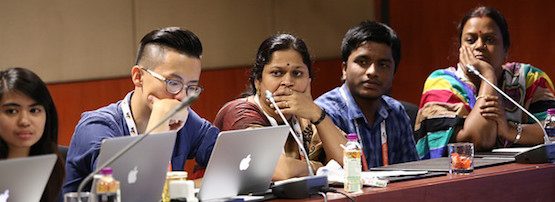
1 October 2016 marks the day that the stewardship of the Internet Assigned Numbers Authority (IANA) functions was transitioned to the global Internet community.
The regional community, including APNIC, was very active in the IANA stewardship transition discussions. Representatives from the Asia Pacific (APAC) region made up between 17 to 25% of the working groups that developed the transition proposals.
I want to say a big thank you to the APNIC community, who ensured that our region was well represented in the final transition outcome.
There’s more to do, post-transition
The successful completion of the transition has further validated the multistakeholder model. This means that the transparent and inclusive method of developing policy is the best way to assure that the Internet of tomorrow remains as free, open and accessible as the Internet of today.
There is more to do now that the transition has been completed. The APAC community needs to use this momentum and participate even more actively in ICANN community discussions going forward.
About half of the world’s Internet users come from Asia Pacific, and the majority of the next billion coming online are expected to be from our region as well. We are the majority of Internet stakeholders. Whether you are from the names, numbers, or protocol parameters communities, we need to work together as a region to continue to shape the Internet’s future.
When I first joined ICANN, many had labelled our region as “price takers” of Internet governance. Asia Pacific stakeholders are often impeded by a lack of understanding of Internet governance-related issues, the multistakeholder model, or simply the lack of confidence to speak up due to cultural barriers.
I think our participation in the IANA stewardship transition conversation has proven otherwise, and we can participate and contribute more actively by addressing the above issues. Within the region, APNIC, ICANN, the Internet Society (ISOC) and many others provide support to help our stakeholders understand the various issues related to Internet governance. Using these tools will help our region participate more actively in the discussions of the future.
While the issues may not always overlap (e.g. numbers versus names), sometimes they do (e.g WHOIS, and lessons learnt regarding DNSSEC and IPv6 adoption). In these instances, we need to keep each other up-to-date on the discussions and share lessons learnt. In this regard, our community members can contribute more effectively on the global stage.
It is our responsibility to ‘speak up’
From the ICANN Asia Pacific Hub, we have successfully implemented an “APAC Space” platform – a community-led platform built to facilitate discussion about ICANN policy development issues at the regional level. APAC Space helps participants by increasing their understanding of the issues being discussed, and works as a ‘practice ground’ to increase their confidence in sharing their views.
The next APAC Space will be held tomorrow (8 November) during the ICANN57 meeting in Hyderabad, India, and I’d like to invite you to join us as part of our regional community.
While we are currently discussing new generic top-level domain (gTLD) subsequent procedures, I believe that the APAC community will be able to contribute our regional perspective to the discussion. And going forward, we may have a topic of discussion that covers an area that overlaps with the numbering community, which you can provide inputs.
I look forward to seeing you either in-person or remotely.
Jia-Rong Low, Vice President and Managing Director, ICANN Asia Pacific.
The views expressed by the authors of this blog are their own and do not necessarily reflect the views of APNIC. Please note a Code of Conduct applies to this blog.
